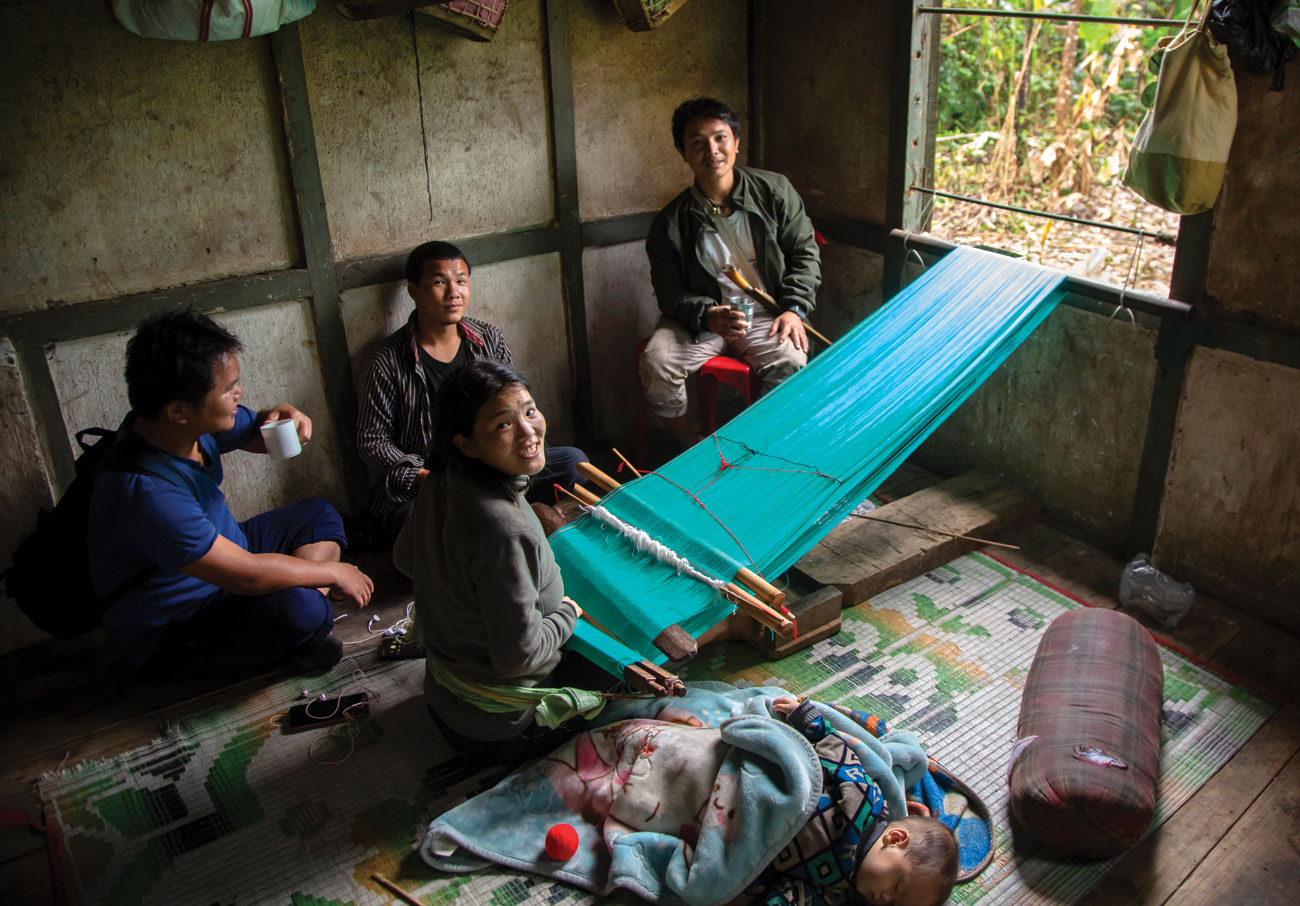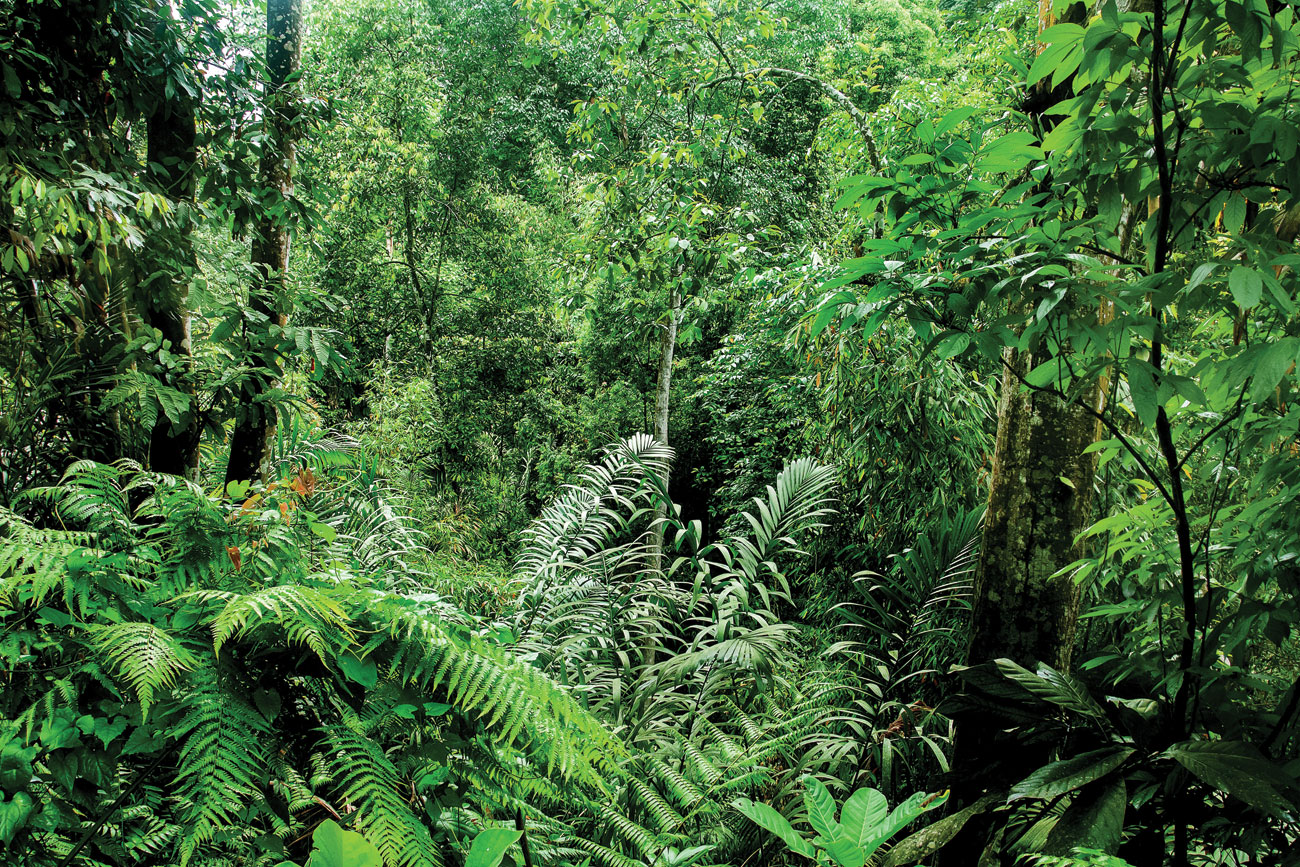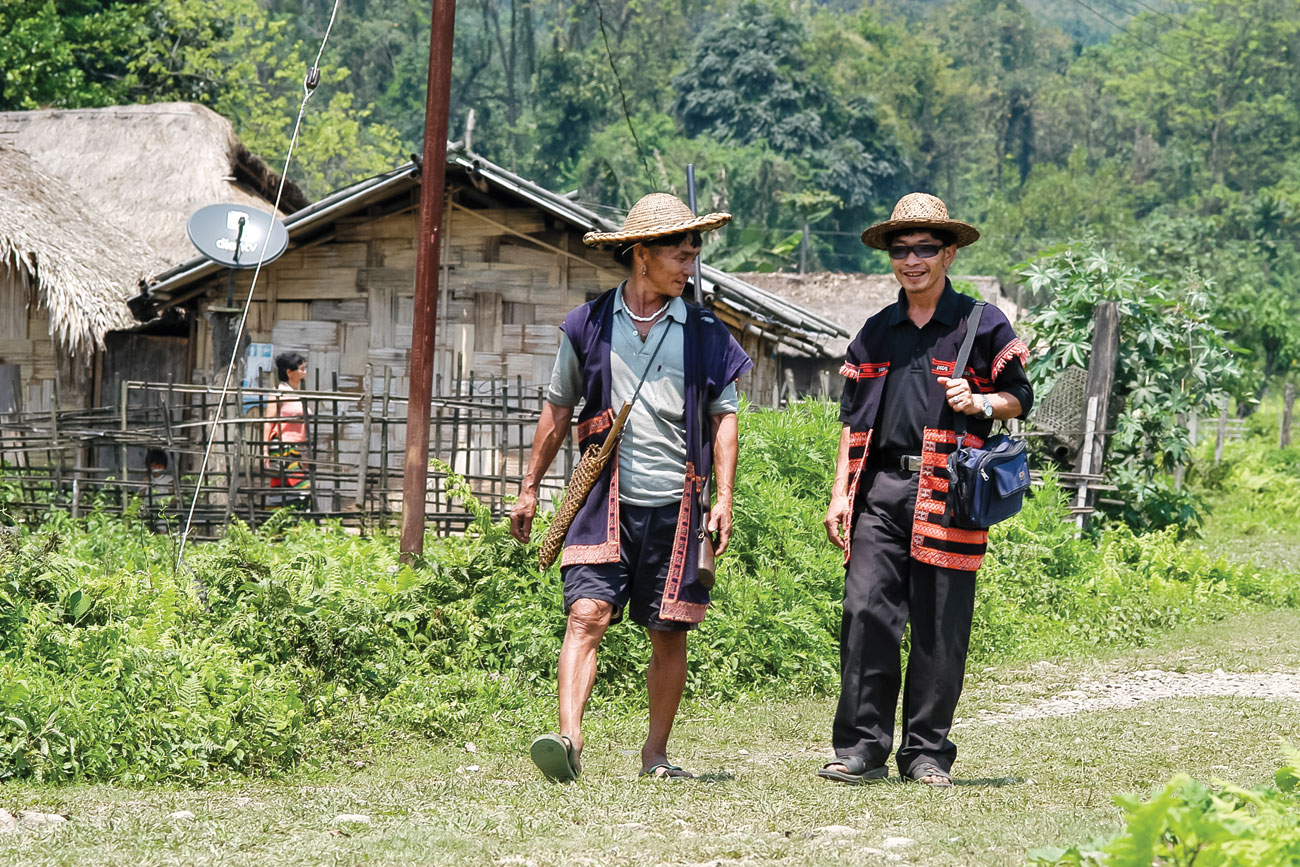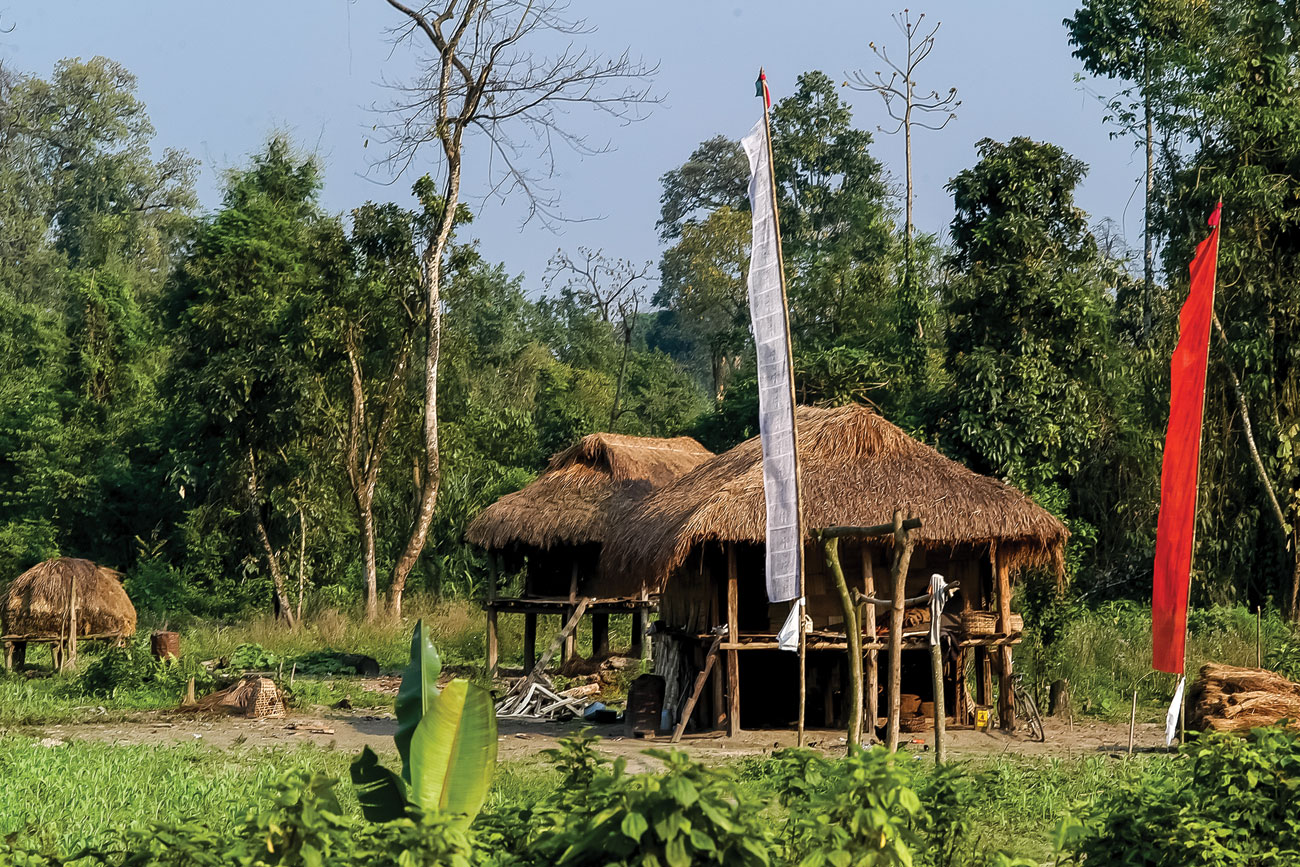Will Dibang Valley Be Saved?
First published in Sanctuary Asia,
Vol. 43
No. 2,
February 2023
By Francesca Cotta
The Forest Advisory Committee has rejected the Etalin Hydro Electric Project in Arunachal Pradesh in its present form and has asked the state government to file a fresh proposal. Sanctuary’s Francesca Cotta gives us an overview of the history of the project and the tremendous ongoing community effort and campaigns to protect this biodiversity rich and seismically active zone in Northeast India.
The recently-released minutes of the Forest Advisory Committee (FAC) meeting, held on December 27, 2022, reveal that the statutory body has rejected the proposal for the Etalin Hydro Electric Project (EHEP) in its current form. This news has brought a glimmer of hope and is a welcome win for the thousands of petitioners – comprising youth from the Idu and Adi communities that live in Dibang valley, scientists, civil society organisations and the general public – who have been vociferously opposing the EHEP for a few years now.

The Idu Mishmi tribe’s long-standing cultural practices and beliefs have allowed the tiger and its habitat to thrive in the community-owned forests of Dibang valley, the highest-known habitats of tigers in India. Photo: Samsul Huda Patgiri.
Sanctuary has consistently been publishing the many representations sent to the FAC, as well as the findings of several independent and peer-reviewed scientific studies on the ecological significance of Dibang valley; the impact that large dam infrastructure projects will have on the socio-cultural fabric of its resident communities; natural hazard risks and climate change-related threats; and the economic unviability of such projects. Several experts have critiqued the procedural flaws in obtaining clearances for the EHEP. We have published responses to frequently asked questions and compiled all the coverage of the issue and the resistance movement that has sprung up as a response to it, in a comprehensive tool kit on our website.
During the meeting, it was noted that the FAC has reviewed the proposal in 2015, 2017, 2019, 2020 and 2022. It was also observed that a large number of representations had been received, voicing concerns against the project. The FAC pointed out that the State Government of Arunachal Pradesh (GoAP) has had a poor record of compliance with respect to the conditions stipulated by the FAC in the approval given for the earlier projects. They said that given that the facts and figures were presented by the State Government to the FAC back in 2014, it is now crucial that these are freshly reviewed – especially regarding the number of trees required to be felled for the project.
The FAC noted, “To resolve the issues raised in various representations, the state government may constitute a high-level empowered committee to look into the various concerns received and come with resolution therein. The Sub-Committee constituted by FAC earlier under the Chairmanship of Dr. Sanjay Deshmukh has looked into the representations received and submitted a report with recommendations. However, there are more representations, which were received by this Ministry after the visit of the Sub-Committee as well, and the same have been communicated to the state government. The representations are generally raising concerns against the instant proposal and need proper redress by the state government in totality.”

The clouded leopard Neofelis nebulosa, is a shy cat inhabiting dense forests from the foothills of the Himalaya through mainland Southeast Asia into South China; pictured here in a camera trap image from Dibang. Photo: Sahil Nijhawan/Pathera/Apfd.
The minutes further note: “It was highlighted that in the earlier approved projects wherein Forest Clearance has been accorded there is poor record of compliance with respect to conditions stipulated by the FAC while according the forest clearance. Further, FAC took note of the submission made by the State Nodal Officer that there are a lot of representations objecting to the present proposal and with regard to already approved projects as well. Due to which already approved projects have not yet started and certain projects are not yet being completed. In view of the above, the FAC requested the state government to review the status of all approved projects (operationalisation /execution of the projects, commencing and completion of the project and thereafter compliance with regard the Stage-I and Stage-II conditions) and submit a status report to this Ministry at the earliest.”
Given the explicit mention of the robust representations that have poured in from members of civil society in the past several months influencing the FAC’s decision to scrap the project in its present form, we thought it useful to recap the most recent letters that have been submitted to the FAC, in the weeks leading up to their December meeting.
Sanctuary’s Founding Editor Writes To FAC
On October 16, 2022, Sanctuary’s Founding Editor Bittu Sahgal, previously a member of the Standing Committee of the erstwhile Indian Board for Wildlife as well as various Environmental Expert Committees, wrote a letter to the FAC about the worrying dilution of conditions on which forest clearance had been granted to infrastructure projects in Arunachal Pradesh.
His letter is a direct response to the news that the Arunachal Pradesh state government is unable to declare a national park in Dibang valley, despite this being a condition on the basis of which forest clearance was granted to the ecologically destructive Dibang Multipurpose Project in this biodiverse region. The Ministry of Environment, Forest and Climate Change gave in-principle approval to the project in 2014 without the state declaring a national park. Now, eight years after the project was conditionally approved, after previously being rejected twice by the FAC, the state government has expressed that it cannot declare the national park.
In his letter, he suggested that the proposal should be examined afresh instead of diluting the existing conditions and assuming the project as fait accompli. He expressed his grave concern over what he described as an ‘emerging trend for diversion of large swathes of forest land in Arunachal Pradesh for mega hydro power projects.’

Master craftsmen, the Idu Mishmis are a major tribe inhabiting the Dibang valley. Youth representatives from the indigenous Idu Mishmi community of Dibang valley have expressed their distress about the violation of their rights in regard to the controversial Dibang Multipurpose Project (DMP) on their ancestral lands. Photo: Samsul Huda Patgiri.
He wrote, “The state government and project developers are often initially silent about the conditions imposed by these committees in lieu of the loss of forest and wildlife habitat at the time of recommendation. Once time has passed or the project is a fait accompli, the state government expresses its belated inability to implement the conditions, instead of doing so before clearances are granted. Faced with fait accompli, the concerned committees then dilute the conditions (instead of examining the project afresh for clearance).”
He also highlighted that the Government of Arunachal communicated its inability to declare a national park eight years after the FAC gave its conditional recommendation. Further, this recommendation came after the proposal was rejected twice on grounds of the rich biodiversity, presence of endemic and endangered flora and fauna and the considerable downstream impacts, which were yet to be studied.

Reportedly, 2.7 lakh trees would need to be felled for the Etalin Hydro Electric Project (EHEP) in its current form. Such biodiversity loss cannot be compensated with afforestation. Photo: Samsul Huda Patgiri.
Idu Mishmi Youth Highlight Rights Violations To FAC
Youth representatives from the indigenous Idu Mishmi community of Dibang valley have expressed their distress about the violation of their rights in regard to the controversial Dibang Multipurpose Project (DMP) on their ancestral lands. In a strongly worded letter to the FAC, the youth have asserted that no Gram Sabha consent has been sought “from Gram Sabhas whose forest lands and rights will be impacted by compensatory and ameliorative measures” as mandated by the Forest Conservation Act, 1980.
The letter also highlights their concerns about the 16 other mega-hydro projects proposed in the Dibang basin, including India’s largest dam, the Etalin Hydro Electric Project, and the impact of various other infrastructure projects on their homeland. They pose difficult questions to the FAC, stating “... our land has been taken away from us for DMP, highways, numerous PMJYS road projects, all of which have violated mandatory environmental safeguards damaging way more land than we were compensated for. How much more of our ancestral land will be taken for development and protection, the benefits of which will not be available to our people?” In light of these facts, the collective has called for “the government of Arunachal Pradesh, the FAC and MoEFCC examine the forest diversion proposal for DMP afresh for its direct and indirect impact on our forest land and rights”.

Master craftsmen, the Idu Mishmis are a major tribe inhabiting the Dibang valley. Youth representatives from the indigenous Idu Mishmi community of Dibang valley have expressed their distress about the violation of their rights in regard to the controversial Dibang Multipurpose Project (DMP) on their ancestral lands. Photo: Samsul Huda Patgiri.
Idu Mishmi Cultural And Literary Society Express Concerns To FAC
In a letter submitted to the FAC on November 28, 2022, the Idu Mishmi Cultural and Literary Society pointed out that since 2014, when the FAC gave clearance for the DMP on the condition that a national park was declared in the valley, at no point did the GoAP communicate and consult with the affected indigenous communities about this condition.
They also highlighted the dilution of environmental laws and double standards on the part of the FAC, in giving the GoAP clearance on strict condition that a national park be declared in the valley, but then later allowing the park to be switched to a Community Conservation Reserve under the Wild Life (Protection) Act, 1972 (WLPA).
Of grave concern to the Society was the MoEFFC’s effective rendering of the Idu Mishmi’s “historical, customary individual and community land rights futile by not allowing us to explore legal avenues beyond the WLPA.” They pointed out that instead, the MoEFFC had “shifted from one Protected Area (PA) to another form of PA with no effective decentralised mechanism of land governance, or equal decision-making power or participation or benefit sharing modalities whatsoever. Instead, provisions of Forest (Conservation) Amendment Rules, 2016 and WLPA have been pitted against FRA to complicate land rights.”
Based on the above procedural issues laid out in the letter, they stressed on the need to place the entire forest diversion proposal for the dam projects, along with the conditions, before local communities, “to understand the full range of impact on our lands and rights.”

Master craftsmen, the Idu Mishmis are a major tribe inhabiting the Dibang valley. Youth representatives from the indigenous Idu Mishmi community of Dibang valley have expressed their distress about the violation of their rights in regard to the controversial Dibang Multipurpose Project (DMP) on their ancestral lands. Photo: Samsul Huda Patgiri.
Dibang: A Global Biodiversity Hotspot
Dibang valley is the largest district in the state of Arunachal Pradesh. The valley borders China to the north, and boasts remarkable topography and rich biodiversity. Snow-capped mountains, lush tropical and sub-tropical forests, wild grasslands, innumerable high-elevation lakes, raging rivers and sparkling mountain streams characterise this region. Dibang valley lies within the Eastern Himalaya Global Biodiversity Hotspot.
Recently, scientific assessments have found Dibang valley to host over 555 bird, 60 mammal, 381 butterfly, 42 fish, 42 reptile, and 48 amphibian species.
The Way Forward
While we seem to have dodged the bullet temporarily, it is vital to continue the momentum to garner support against the Etalin Hydro Electric Project. Given the impact – the irreplaceable loss of biodiversity, potential cultural dilution, and the risks of such projects in this seismically active geological region, particularly in the face of climate change, the stakes are just too high for us to rest on this temporary respite until the project clearance is completely rejected.
Francesca Cotta is a writer and editor who has worked on projects related to sustainability, travel, environmental justice, and literature. She is currently an Assistant Editor at Sanctuary Asia.







